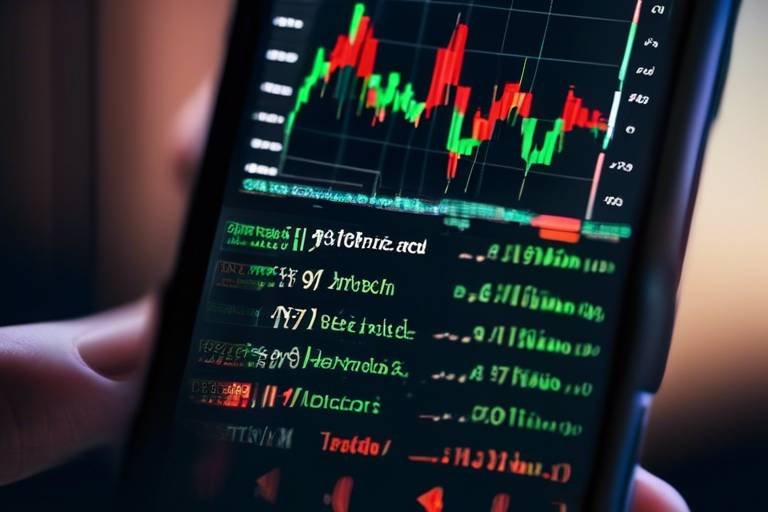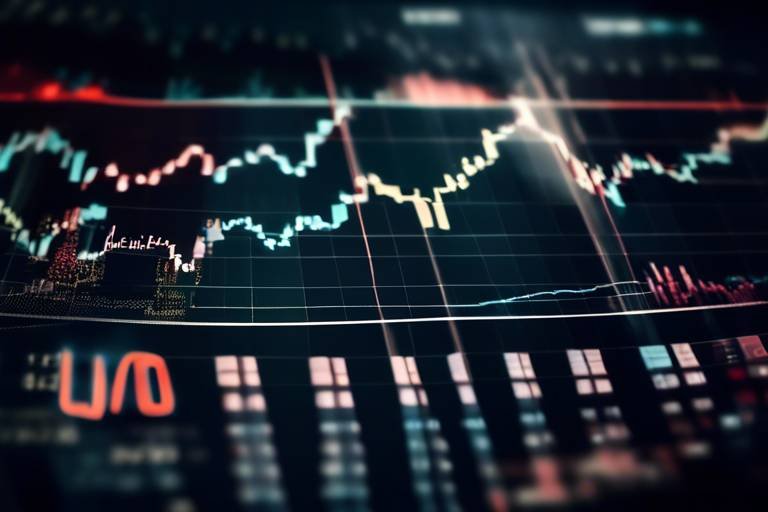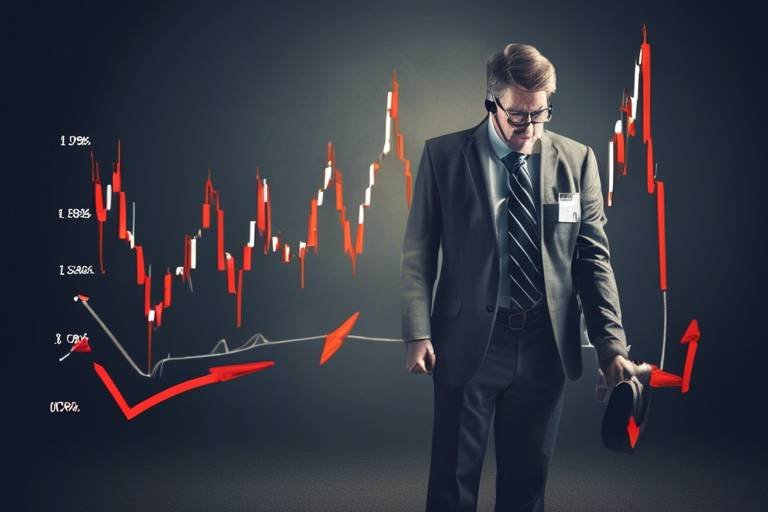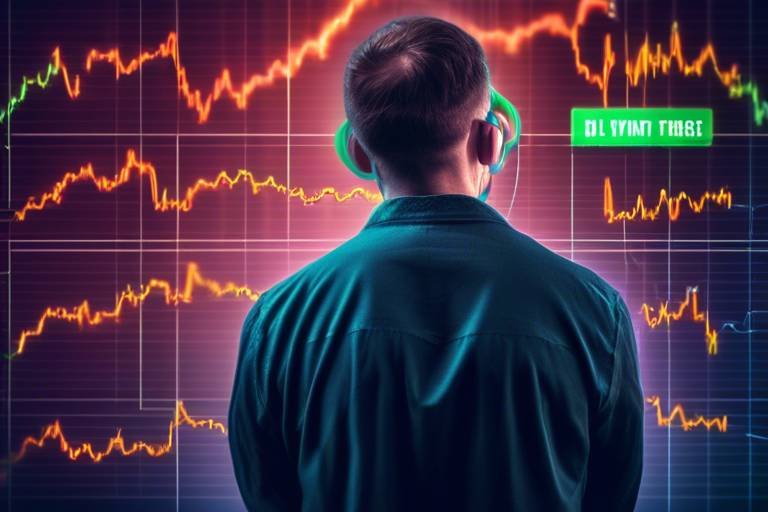Algorithmic Trading - Automating Your Strategies
Welcome to the fascinating world of algorithmic trading, where technology meets finance in a dance of precision and speed! In today's fast-paced markets, the ability to automate trading strategies can mean the difference between success and failure. But what exactly is algorithmic trading? Simply put, it involves using computer algorithms to execute trades based on predefined criteria. Imagine having a tireless assistant that can analyze market data, execute trades, and manage your portfolio—all while you enjoy your morning coffee! This article will explore the fundamentals of algorithmic trading, its benefits, various strategies, and how automation can enhance trading performance while reducing risks and emotional decision-making.
Algorithmic trading has its roots in the early days of electronic trading, evolving significantly with advancements in technology. Initially, traders relied on manual methods, which were often slow and prone to errors. Fast forward to today, and we have sophisticated algorithms capable of executing thousands of trades in mere seconds. These algorithms are designed to analyze vast amounts of data, identify patterns, and make decisions without human intervention. The beauty of algorithmic trading lies in its ability to respond to market changes almost instantaneously, making it a powerful tool for traders looking to gain an edge.
So, why should you consider algorithmic trading? The benefits are numerous, and they can significantly enhance your trading experience:
- Increased Efficiency: Algorithms can process data and execute trades much faster than any human could.
- Reduced Transaction Costs: Automation often leads to lower costs per trade, which can add up over time.
- Data Analysis: Algorithms can analyze vast datasets quickly, leading to better-informed trading decisions.
These advantages not only help traders make better decisions but also allow them to focus on strategy development rather than the minutiae of daily trading activities.
In the world of trading, speed is king. Algorithmic trading allows for rapid execution of trades, significantly reducing the time taken compared to manual trading. Imagine trying to catch a bus; if you’re running late, the chances of missing it are high. Similarly, in trading, missing the right moment can lead to missed opportunities or losses. The speed at which algorithms operate ensures that trades are executed at the best possible prices, which is crucial in volatile markets.
One of the most significant advantages of algorithmic trading is the reduction of human error. Emotional decision-making, fatigue, and stress can lead to costly mistakes. By automating trades, algorithmic trading minimizes these risks, ensuring that each trade is executed with precision. Think of it as having a personal robot that never gets tired or distracted, always making the right call based on data rather than feelings.
Backtesting is a crucial component of algorithmic trading, allowing traders to test their strategies against historical data. This process is akin to a pilot using a flight simulator before taking off; it provides valuable insights into how a strategy would have performed in the past. By analyzing historical data, traders can tweak their algorithms for better performance, ensuring they are well-prepared for future market conditions.
There are various algorithmic trading strategies, each catering to different trading styles and objectives. Some popular strategies include:
- Trend-Following: This strategy involves identifying and capitalizing on upward or downward market trends.
- Arbitrage: Traders exploit price discrepancies between different markets or instruments.
- Market-Making: This involves providing liquidity to the market by placing buy and sell orders.
Each of these strategies has its unique features and risk profiles, making it essential for traders to choose the one that aligns with their trading goals.
While algorithmic trading offers numerous benefits, it is not without its risks. Understanding these potential pitfalls is crucial for any trader looking to automate their strategies. Some of the key risks include:
Market risks in algorithmic trading arise from sudden price movements and unexpected events, such as economic announcements or geopolitical tensions. These can lead to significant losses if not managed effectively. Traders must implement risk management strategies to safeguard their investments, ensuring they are prepared for any market scenario.
Technical failures, such as software bugs or connectivity issues, can disrupt trading operations. Imagine your car breaking down in the middle of a race; it’s a recipe for disaster! To mitigate these risks, traders should regularly update their systems, conduct thorough testing, and have contingency plans in place to address any technical issues that may arise.
1. What is algorithmic trading?
Algorithmic trading involves using computer algorithms to execute trades based on predefined criteria, allowing for faster and more efficient trading.
2. What are the benefits of algorithmic trading?
The benefits include increased efficiency, reduced transaction costs, and the ability to analyze large datasets quickly.
3. What are the risks associated with algorithmic trading?
Risks include market volatility, technical failures, and the potential for over-optimization of trading strategies.

What is Algorithmic Trading?
Algorithmic trading, often referred to as algo trading, is the process of using computer algorithms to execute trades in the financial markets based on predefined criteria. Imagine having a super-smart robot that can analyze market conditions and make trading decisions faster than any human ever could. This innovative approach has revolutionized the way trading is conducted, allowing traders to capitalize on market opportunities with precision and speed.
The concept of algorithmic trading isn't new; it has evolved significantly since its inception in the late 20th century. Initially, traders relied on simple mathematical models, but as technology advanced, so did the sophistication of these algorithms. Today, algorithmic trading encompasses a wide range of strategies that can analyze vast amounts of data in real-time, making it a crucial tool for both institutional investors and individual traders looking to gain a competitive edge.
To understand algorithmic trading better, let’s break it down into a few key components:
- Predefined Criteria: These are the specific rules and conditions set by traders based on their analysis of the market. This could include factors like price levels, volume, and other technical indicators.
- Execution: Once the criteria are met, the algorithm automatically executes the trade, removing the need for human intervention.
- Data Analysis: Algorithms can process and analyze vast datasets far more quickly than a human can, enabling traders to make informed decisions based on real-time data.
In essence, algorithmic trading combines the power of technology with the art of trading, leading to a more efficient and effective trading process. It allows traders to implement complex strategies that would be impossible to execute manually, thus opening new avenues for profit. With the financial markets becoming increasingly competitive, the ability to automate trading strategies is not just a luxury but a necessity for those looking to thrive in this dynamic environment.
As we delve deeper into the world of algorithmic trading, we will explore its numerous benefits, various strategies, and the risks involved. But first, it's essential to grasp the foundational concepts that make algorithmic trading a game-changer in the financial industry.
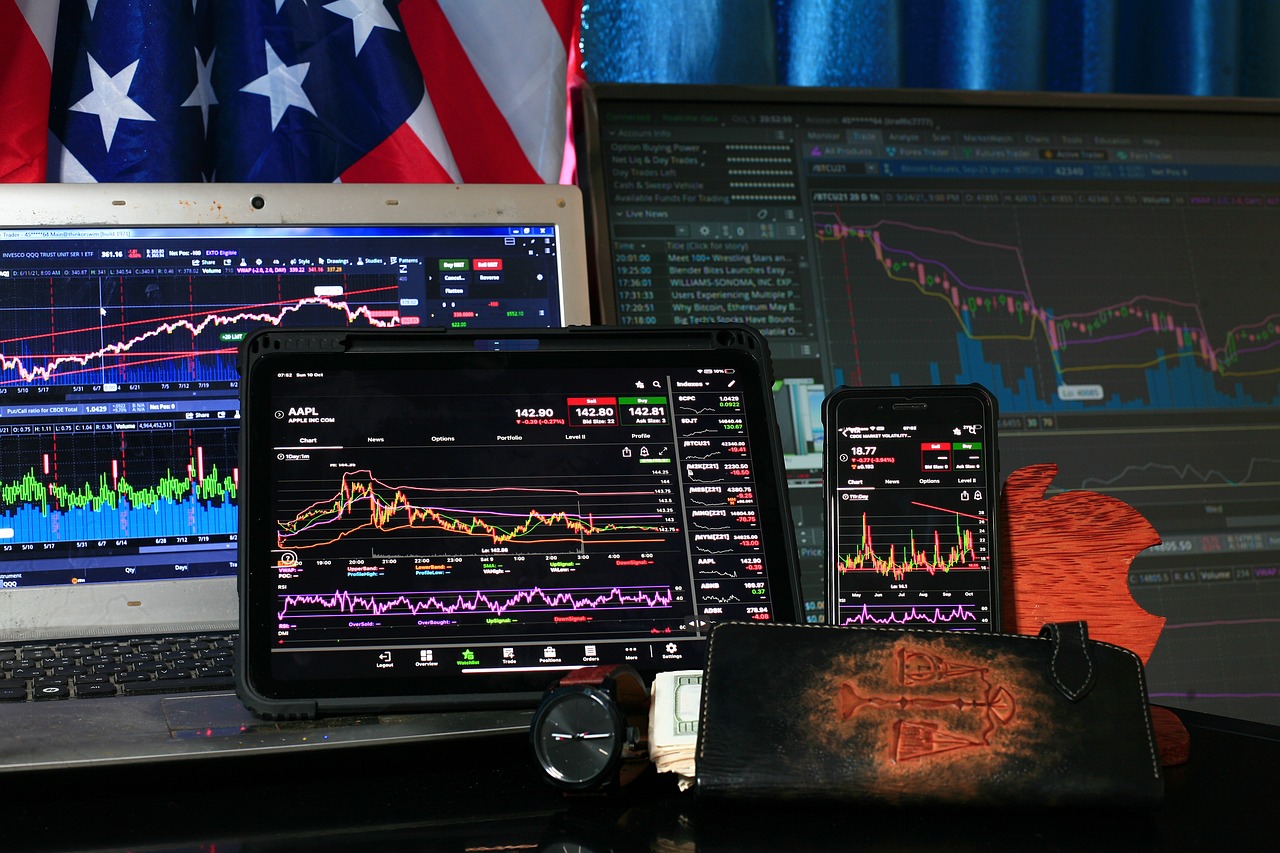
Benefits of Algorithmic Trading
When it comes to trading in the fast-paced world of finance, algorithmic trading stands out as a game-changer. Imagine having a super-smart assistant that can analyze mountains of data in seconds and execute trades without breaking a sweat. That's essentially what algorithmic trading does! By automating the trading process, it offers several advantages that can significantly enhance a trader's performance.
One of the most notable benefits is the increased efficiency. Traditional trading methods can be time-consuming and labor-intensive. Traders often find themselves overwhelmed by the sheer volume of data they need to analyze. However, with algorithmic trading, algorithms can process this data at lightning speed, allowing for quicker decision-making. This efficiency not only saves time but also capitalizes on fleeting market opportunities that human traders might miss.
Another major perk is the reduction in transaction costs. In manual trading, costs can accumulate quickly due to frequent buying and selling. Algorithmic trading optimizes these transactions, leading to lower costs and better profit margins. This is especially vital in high-frequency trading, where even a fraction of a cent can make a significant difference in overall profitability.
Moreover, algorithmic trading excels in its ability to analyze vast amounts of data quickly, leading to better decision-making. Traders can employ sophisticated algorithms that consider numerous variables and indicators, allowing for a more comprehensive approach to trading. For instance, an algorithm might analyze historical price movements, market sentiment, and even economic indicators to make informed trading decisions.
Let's take a closer look at the speed and efficiency that algorithmic trading brings to the table. When a trader spots a potential opportunity, every second counts. Algorithms can execute trades in milliseconds, a feat that no human can match. This speed allows traders to enter and exit positions at optimal times, maximizing potential profits. In contrast, manual trading can lead to delays and missed opportunities, especially during volatile market conditions.
Another significant advantage of algorithmic trading is the reduction of human error. Emotions can cloud judgment, leading to rash decisions that might not align with a trader's strategy. Fatigue can also play a role in human error, particularly during long trading sessions. By automating trades, algorithms maintain a level of consistency and accuracy that is difficult for human traders to replicate. This reliability is crucial for maintaining a disciplined trading approach.
One of the most critical elements of algorithmic trading is backtesting. This process allows traders to test their strategies against historical data, providing insights into how a strategy might perform in real-world conditions. Backtesting helps identify strengths and weaknesses, enabling traders to refine their strategies before risking real capital. It’s like having a practice run before the big game—essential for building confidence and improving performance.
In summary, the benefits of algorithmic trading are profound. From increased efficiency and reduced costs to enhanced decision-making and minimized human error, it offers a robust framework for modern trading. As the financial landscape continues to evolve, algorithmic trading will undoubtedly play a pivotal role in shaping the future of trading.

Speed and Efficiency
In the fast-paced world of trading, speed and efficiency are not just advantages; they are essential for success. Imagine standing at a bustling market, where every second counts, and the prices of goods fluctuate rapidly. Just like a savvy shopper who knows how to grab the best deals before they vanish, algorithmic trading employs computer algorithms to execute trades in the blink of an eye. This technological prowess allows traders to capitalize on fleeting market opportunities that would be impossible to seize through manual trading.
One of the most significant benefits of algorithmic trading is its ability to execute orders in milliseconds. When the market shifts, every moment matters. A delay of even a fraction of a second can mean the difference between a profitable trade and a missed opportunity. With algorithms, trades are executed at lightning speed, ensuring that traders can react to market changes almost instantaneously. This speed not only enhances the chances of making profitable trades but also contributes to overall market efficiency.
To illustrate this, let's consider a hypothetical scenario: A trader is monitoring a stock that is experiencing a sudden price surge. In a traditional manual trading setup, the trader would need to analyze the situation, make a decision, and then place the order—all of which can take several seconds. In contrast, an algorithm can analyze the data, identify the opportunity, and execute the trade automatically within milliseconds. This capability significantly reduces the latency in trading decisions, allowing traders to stay ahead of the competition.
Furthermore, the efficiency of algorithmic trading extends beyond mere speed. Algorithms can simultaneously monitor multiple markets and securities, analyzing vast amounts of data to identify trends and patterns that might go unnoticed by human traders. This capability allows for a more comprehensive approach to trading, where decisions are based on data-driven insights rather than gut feelings or emotional biases. As a result, traders can develop more sophisticated strategies that leverage real-time data to maximize their returns.
In addition to speed and data analysis, algorithmic trading systems can also operate around the clock. Unlike human traders who need breaks and rest, algorithms can continuously monitor markets and execute trades at any time of day or night. This 24/7 functionality is particularly beneficial for trading in global markets, where opportunities can arise outside of regular trading hours. The ability to trade at any time enhances liquidity and allows traders to capitalize on international market movements without the constraints of traditional trading hours.
In conclusion, the speed and efficiency of algorithmic trading are game-changers in the financial markets. By automating the trading process, traders can react faster, analyze more data, and execute trades with precision. This not only increases the potential for profits but also contributes to a more efficient market overall. As technology continues to evolve, the advantages of algorithmic trading will likely become even more pronounced, reshaping the landscape of trading as we know it.

Reduced Human Error
One of the most compelling advantages of algorithmic trading is its ability to significantly reduce human error. Let’s face it: trading can be an emotional rollercoaster. The thrill of a potential win can lead to impulsive decisions, while the fear of a loss may cause traders to hesitate or second-guess themselves. By automating the trading process, algorithmic trading takes the emotional component out of the equation, allowing for a more disciplined approach.
Imagine you’re in a high-stakes poker game. Your emotions are running high, and your decision-making is clouded by the pressure of the moment. Now, contrast that with a computer algorithm that executes trades based on pre-set criteria without any emotional involvement. This is the essence of algorithmic trading. It operates on logic and data, ensuring that trades are executed precisely as planned, without the influence of fear or greed.
Moreover, the consistency brought about by algorithmic trading is invaluable. Unlike humans, algorithms do not suffer from fatigue or distraction. They can analyze market conditions and execute trades continuously, 24/7, without a drop in performance. This level of consistency can lead to more accurate trading outcomes. For instance, consider the following table that highlights the differences between human and algorithmic trading:
| Aspect | Human Trading | Algorithmic Trading |
|---|---|---|
| Emotional Influence | High | None |
| Consistency | Variable | High |
| Execution Speed | Slow | Instantaneous |
| Fatigue | Yes | No |
In addition to minimizing emotional decision-making, algorithmic trading also enhances accuracy in executing trades. For example, when a trader manually places a trade, there’s always a risk of misclicking or entering the wrong parameters. An algorithm, however, follows a defined set of rules and can execute trades with pinpoint precision. This not only saves time but also reduces the likelihood of costly mistakes.
Furthermore, the use of backtesting in algorithmic trading allows traders to refine their strategies based on historical data. This means that before deploying a trading strategy in real-time, traders can simulate how it would have performed in the past. This practice helps to identify potential flaws in the strategy, allowing for adjustments that minimize the risk of human error when the strategy is eventually implemented.
In summary, the automation provided by algorithmic trading is a game-changer in the financial markets. By effectively removing the emotional element and enhancing precision, traders can focus on strategy rather than the psychological challenges that often accompany trading. As the trading landscape continues to evolve, embracing algorithmic trading could be the key to achieving greater success while navigating the complexities of the market.
- What is algorithmic trading? Algorithmic trading refers to the use of computer algorithms to automate trading decisions based on predefined criteria.
- How does algorithmic trading reduce human error? By removing emotional decision-making and ensuring consistent execution of trades, algorithmic trading minimizes the potential for human errors.
- Can I implement my own trading strategies using algorithms? Yes, many platforms allow traders to create and test their own algorithms based on specific strategies.
- What are the risks associated with algorithmic trading? Risks include technical failures, market volatility, and the potential for over-optimization of strategies.

Backtesting Strategies
Backtesting strategies are a cornerstone of algorithmic trading, allowing traders to evaluate the effectiveness of their trading algorithms against historical market data. Imagine you’re a chef experimenting with a new recipe; before serving it to guests, you’d want to taste it yourself, right? Similarly, backtesting provides traders with the opportunity to “taste” their strategies before committing real capital. By simulating trades based on past market conditions, traders can gain insights into how their algorithms would have performed, helping them to refine their approaches and improve their chances of success.
The process of backtesting involves several steps. Initially, traders need to define their trading strategy clearly, including entry and exit points, risk management rules, and any other parameters that will guide their trades. Once the strategy is established, historical data is gathered, which can include price movements, volume, and other relevant market indicators. This data is then fed into the algorithm, which simulates trades as if they were executed in real-time. The results are analyzed to assess the strategy's profitability, drawdowns, and overall performance metrics.
One of the significant advantages of backtesting is the ability to identify potential weaknesses in a trading strategy. For instance, if a strategy looks promising on paper but fails during backtesting, it may indicate that the algorithm is overfitting to historical data or that it lacks robustness under different market conditions. Traders can then make adjustments to their strategies, enhancing their resilience and adaptability.
Moreover, backtesting allows for the quantification of risk. By analyzing historical performance, traders can better understand the potential drawdowns they might face in live trading. This understanding is crucial because it helps traders set realistic expectations and adjust their risk management strategies accordingly. For example, if a backtest reveals that a strategy experiences a maximum drawdown of 20%, a trader can prepare psychologically and financially for similar scenarios when trading live.
However, it’s essential to approach backtesting with a critical eye. While it can provide valuable insights, it is not foolproof. There are common pitfalls to avoid, such as:
- Data Snooping: This occurs when traders test multiple strategies on the same dataset, leading to overfitting and unrealistic expectations.
- Survivorship Bias: This happens when only successful trades are considered, ignoring those that failed, which can skew performance results.
- Ignoring Market Changes: Market dynamics change over time, and a strategy that worked well in the past may not necessarily perform in the future.
To mitigate these risks, traders should use robust backtesting software that allows for comprehensive analysis and incorporates various market conditions. Additionally, it's advisable to conduct out-of-sample testing, where a strategy is tested on data that was not used during the initial backtesting phase. This helps to validate the robustness of the strategy and ensures that it can adapt to changing market environments.
In conclusion, backtesting is an invaluable tool for algorithmic traders. It not only helps in refining trading strategies but also equips traders with the knowledge and confidence needed to navigate the complex world of financial markets. By understanding the historical performance of their strategies, traders can make informed decisions that enhance their chances of success in live trading.
- What is backtesting in algorithmic trading? Backtesting is the process of testing a trading strategy using historical data to evaluate its effectiveness before applying it in live markets.
- Why is backtesting important? It helps traders understand how their strategies would have performed in the past, allowing them to refine their approaches and manage risks effectively.
- What are common pitfalls of backtesting? Common pitfalls include data snooping, survivorship bias, and ignoring market changes, which can lead to unrealistic expectations.
- How can I improve my backtesting process? Use robust software, conduct out-of-sample testing, and avoid overfitting to ensure your strategy is resilient under different market conditions.

Types of Algorithmic Trading Strategies
When it comes to algorithmic trading, the variety of strategies available can be as diverse as the traders who use them. Each strategy is tailored to specific market conditions and trading goals, making it crucial for traders to understand their options. Let’s dive into some of the most popular algorithmic trading strategies that have gained traction in the financial markets.
One of the most widely used strategies is trend-following. This approach is based on the idea that assets that have been rising in price will continue to rise, and those that have been falling will continue to fall. Traders using this strategy typically employ indicators such as moving averages to identify trends and execute trades accordingly. The beauty of trend-following lies in its simplicity; it’s like riding a wave—once you find a good wave, you want to stay on it as long as possible!
Another prominent strategy is arbitrage. This method exploits price discrepancies between different markets or instruments. For instance, if a stock is trading at a lower price on one exchange compared to another, an arbitrage strategy would involve buying the stock on the cheaper exchange and selling it on the more expensive one. While this may sound straightforward, it requires lightning-fast execution and sophisticated algorithms to capitalize on fleeting opportunities. Think of it as a game of catch—if you can grab the ball before anyone else, you score!
Then there’s the market-making strategy, which involves providing liquidity to the markets by placing buy and sell orders. Market makers profit from the spread—the difference between the buying and selling price. This strategy is essential for maintaining market efficiency, as it ensures that there are always buyers and sellers available. However, it also comes with risks, particularly during periods of high volatility. Imagine being the person at a concert trying to sell tickets; if the crowd suddenly surges, you might find yourself in a tough spot!
Other notable strategies include mean reversion, which is based on the assumption that prices will revert to their historical averages, and sentiment analysis, which uses data from social media and news sources to gauge market sentiment. Each of these strategies has its own unique features and requires a different approach to risk management.
| Strategy | Description | Key Features |
|---|---|---|
| Trend-Following | Exploits ongoing price trends in the market. | Simple, relies on indicators like moving averages. |
| Arbitrage | Takes advantage of price discrepancies across markets. | Requires fast execution, low-risk if done correctly. |
| Market-Making | Provides liquidity by placing buy and sell orders. | Profits from the spread, essential for market efficiency. |
| Mean Reversion | Assumes prices will revert to historical averages. | Relies on statistical analysis, requires careful timing. |
| Sentiment Analysis | Uses social media and news data to gauge market sentiment. | Innovative, combines data science with trading. |
In summary, the world of algorithmic trading is rich with various strategies, each offering unique opportunities and challenges. Whether you prefer to ride the trends, capitalize on price discrepancies, or provide liquidity to the markets, there’s a strategy that aligns with your trading style. The key is to understand the mechanics behind each one and to continually refine your approach as market conditions change.
Q: What is algorithmic trading?
A: Algorithmic trading involves using computer algorithms to execute trades based on predefined criteria, allowing for faster and more efficient trading.
Q: What are the benefits of algorithmic trading?
A: Benefits include increased efficiency, reduced transaction costs, and the ability to analyze large datasets quickly, leading to better decision-making.
Q: Can anyone use algorithmic trading?
A: Yes, anyone with the right tools and knowledge can engage in algorithmic trading, though it often requires a solid understanding of trading strategies and programming.
Q: What are the risks of algorithmic trading?
A: Risks include market volatility, technical failures, and the potential for over-optimization of trading strategies.

Risks Associated with Algorithmic Trading
While algorithmic trading presents a plethora of benefits, it is crucial to understand the risks that accompany it. Just like a double-edged sword, algorithmic trading can lead to significant gains but can also expose traders to various pitfalls. One of the primary concerns is market volatility, which can lead to unexpected price movements. For instance, a sudden news event can trigger rapid changes in market conditions, catching algorithms off guard. This unpredictability can result in substantial losses if the algorithms are not designed to react swiftly to such changes.
Moreover, technical risks play a significant role in algorithmic trading. Issues such as software bugs or connectivity problems can disrupt trading operations at critical moments. Imagine setting up a perfectly optimized trading strategy, only to have it fail due to a simple network glitch. Such technical failures can lead to missed opportunities or, worse, unintentional trades that go against the trader's strategy. Therefore, it is essential to have robust systems in place to monitor and manage these risks effectively.
Another risk associated with algorithmic trading is the potential for over-optimization. Traders often backtest their strategies against historical data to refine their algorithms. However, it is easy to fall into the trap of creating a strategy that performs exceptionally well on past data but fails in real-time trading. This phenomenon, often referred to as "curve fitting," can lead to overconfidence and ultimately result in financial losses. It’s like trying to predict the weather based solely on last year's data; conditions change, and so must your strategy.
To illustrate the types of risks involved in algorithmic trading, the table below summarizes key risks and their potential impacts:
| Risk Type | Description | Potential Impact |
|---|---|---|
| Market Risk | Sudden price movements due to market volatility. | Significant financial losses. |
| Technical Risk | Software bugs or connectivity issues disrupting trades. | Missed opportunities or unintended trades. |
| Over-Optimization | Strategies that perform well on historical data but fail in real-time. | Loss of confidence and financial setbacks. |
As traders venture into algorithmic trading, it is vital to implement risk management strategies. This includes regularly updating algorithms, conducting thorough testing, and maintaining a close eye on market conditions. By doing so, traders can safeguard their investments and enhance their chances of success in this fast-paced environment. In the end, understanding and managing these risks is just as crucial as the strategies themselves.
In conclusion, while algorithmic trading offers a pathway to efficiency and speed, it is essential to navigate the associated risks with caution. Just like a skilled sailor learns to read the winds and tides, traders must develop a keen awareness of the market landscape to sail smoothly through the turbulent waters of algorithmic trading.
- What are the main risks of algorithmic trading?
The main risks include market volatility, technical failures, and over-optimization of trading strategies. - How can I mitigate technical risks in algorithmic trading?
Implement robust monitoring systems, conduct regular software updates, and ensure reliable internet connectivity. - What is over-optimization in trading?
Over-optimization occurs when a trading strategy is excessively refined based on historical data, leading to poor performance in real-time trading.
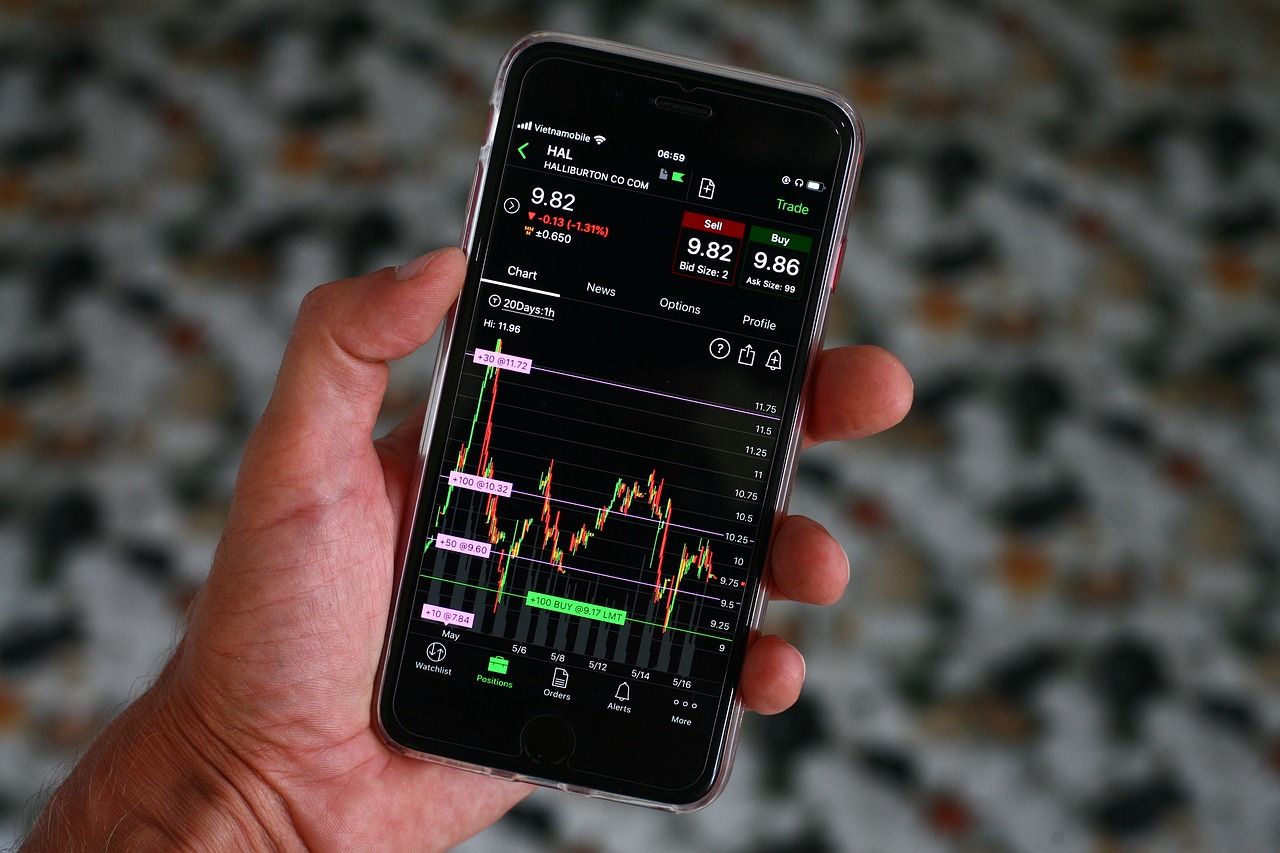
Market Risks
When diving into the world of algorithmic trading, it's essential to understand that while the potential for profit is significant, the involved can be daunting. Market risks in algorithmic trading refer to the potential for losses due to sudden price movements or unexpected events that can affect the financial markets. Imagine you're sailing a ship in a vast ocean; just as you can encounter calm waters or fierce storms, traders face similar unpredictability in the markets. One moment, everything seems fine, and the next, a sudden economic report or geopolitical event can send stock prices tumbling.
To effectively manage these risks, traders often implement several strategies. For instance, they might set stop-loss orders to automatically sell a security when it reaches a certain price, limiting potential losses. Additionally, using diversification across different asset classes can help mitigate the impact of a downturn in any one area. Just like a balanced diet is crucial for maintaining health, a diversified portfolio is vital for financial stability.
Moreover, understanding the market's volatility is crucial. Volatility refers to the degree of variation in trading prices over time. High volatility can present opportunities for profit, but it also increases the risk of substantial losses. Traders need to keep a close eye on market indicators and news that could signal impending volatility. For example, economic announcements such as interest rate changes or employment reports can lead to swift market reactions.
In addition to external factors, algorithmic trading systems themselves can introduce risks. If the algorithms are not correctly calibrated to respond to sudden market changes, they might execute trades that lead to significant losses. Therefore, continuous monitoring and adjustments to the trading algorithms are necessary to adapt to the ever-changing market landscape.
To summarize, while algorithmic trading can offer numerous advantages, the associated market risks are significant. Traders must remain vigilant and proactive in managing these risks to safeguard their investments. By employing strategies like stop-loss orders, diversification, and constant monitoring of market conditions, traders can navigate the turbulent waters of algorithmic trading more effectively.
- What is algorithmic trading? Algorithmic trading involves using computer algorithms to automate trading decisions based on predefined criteria.
- What are the benefits of algorithmic trading? Benefits include increased efficiency, reduced transaction costs, and the ability to analyze vast amounts of data quickly.
- What are the main risks associated with algorithmic trading? Key risks include market volatility, technical failures, and the potential for over-optimization.
- How can traders manage market risks? Traders can manage risks through strategies like stop-loss orders, diversification, and continuous market monitoring.
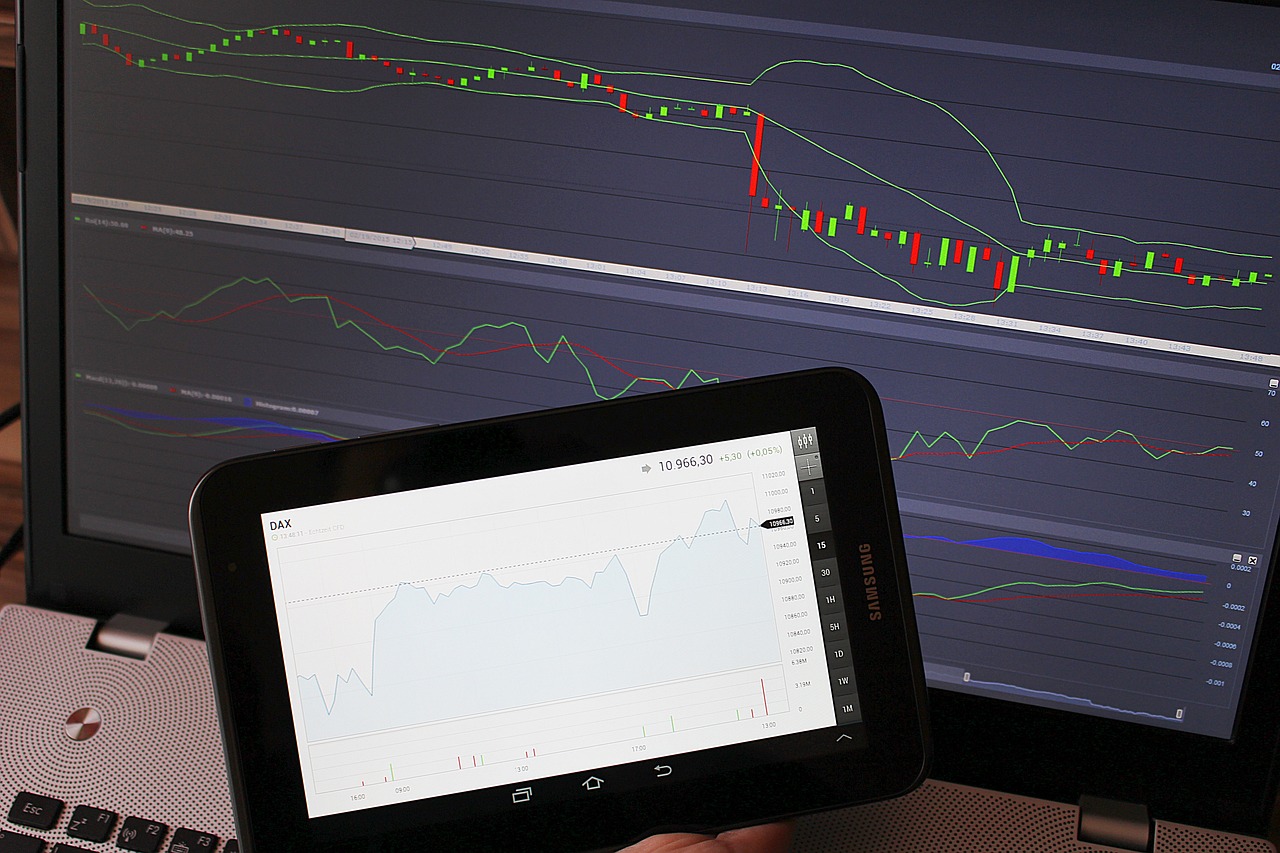
Technical Risks
In the fast-paced world of algorithmic trading, technical risks can be as daunting as market volatility. Imagine you're on a roller coaster, and just as you're about to plunge down, the ride suddenly stops due to a technical glitch. This analogy perfectly captures the anxiety traders face when their automated systems falter. Technical failures can manifest in various forms, such as software bugs, connectivity issues, or hardware malfunctions, and they can disrupt trading operations at the most critical moments.
One of the most prevalent technical risks is software bugs. These unintentional errors in the code can lead to incorrect trading signals, causing traders to execute trades that go against their intended strategy. For instance, if a bug triggers a buy order when the algorithm is supposed to sell, it could lead to significant losses. Furthermore, the complexity of algorithms often makes it challenging to identify and rectify these bugs promptly. Thus, thorough testing and debugging are essential before deploying any algorithm in a live trading environment.
Connectivity issues also pose a significant risk. In algorithmic trading, speed is everything, and even a momentary loss of connection to the trading platform can result in missed opportunities or unintended trades. Traders rely on stable internet connections and robust network infrastructure to execute their strategies seamlessly. To mitigate this risk, many traders invest in backup systems and redundant connections to ensure they can maintain their trading operations even if their primary connection fails.
Additionally, hardware malfunctions can disrupt trading activities. Imagine your powerful trading computer suddenly crashing during a market surge. Such incidents can lead to missed trades or, worse, holding onto losing positions longer than necessary. To combat this, traders should consider implementing hardware redundancy, such as using multiple machines or cloud-based solutions, to ensure that their trading strategies remain operational even in the face of hardware failures.
Moreover, the risk of over-optimization can also be considered a technical risk. While backtesting is crucial for developing robust trading strategies, excessive fine-tuning of algorithms to fit historical data can lead to poor performance in real-market conditions. This phenomenon, known as curve fitting, occurs when a strategy is tailored too closely to past data, making it less adaptable to new market conditions. Traders must strike a balance between optimizing their strategies and maintaining their flexibility to respond to changing market dynamics.
In summary, while algorithmic trading can offer significant advantages, it is essential to acknowledge and address the technical risks involved. By implementing rigorous testing protocols, ensuring stable connections, investing in reliable hardware, and avoiding over-optimization, traders can enhance the resilience of their trading systems. As the landscape of algorithmic trading continues to evolve, staying informed about these risks will be crucial for long-term success.
- What are the main technical risks in algorithmic trading? Technical risks primarily include software bugs, connectivity issues, hardware malfunctions, and the risk of over-optimization.
- How can I mitigate software bugs in my trading algorithm? Thorough testing and debugging are essential. Consider running simulations and using test environments before deploying your algorithm in live markets.
- What should I do if my trading system experiences connectivity issues? Invest in backup systems and redundant connections to ensure you can maintain trading operations in case of a primary connection failure.
- Is over-optimization a common issue in algorithmic trading? Yes, over-optimization is a risk that can lead to poor performance in live markets. It’s important to maintain a balance between optimizing for historical data and being adaptable to current market conditions.
Frequently Asked Questions
- What is algorithmic trading?
Algorithmic trading refers to the use of computer algorithms to execute trades automatically based on predefined criteria. This method allows traders to take advantage of market opportunities quickly and efficiently, eliminating the need for manual intervention.
- What are the benefits of algorithmic trading?
There are several key benefits to algorithmic trading, including:
- Increased speed and efficiency in executing trades.
- Reduced transaction costs due to lower spreads and slippage.
- The ability to analyze vast amounts of market data rapidly, leading to better-informed trading decisions.
- How does algorithmic trading reduce human error?
By automating the trading process, algorithmic trading minimizes human errors that can arise from emotional decision-making or fatigue. This consistency in execution helps improve overall trading outcomes.
- What is backtesting in algorithmic trading?
Backtesting is the process of testing a trading strategy against historical market data to evaluate its effectiveness. This allows traders to refine their strategies before deploying them in live markets, increasing the chances of success.
- What types of algorithmic trading strategies are there?
Various algorithmic trading strategies cater to different trading styles, including:
- Trend-following strategies that capitalize on market momentum.
- Arbitrage strategies that exploit price discrepancies across different markets.
- Market-making strategies that provide liquidity by placing buy and sell orders.
- What are the risks associated with algorithmic trading?
While algorithmic trading has numerous advantages, it also carries risks such as:
- Market risks arising from sudden price movements and unexpected events.
- Technical risks, including software bugs or connectivity issues that can disrupt trading operations.
- The risk of over-optimization, where strategies may perform well on historical data but fail in real-time trading.
- How can traders manage market risks in algorithmic trading?
Traders can manage market risks by implementing risk management strategies, such as setting stop-loss orders, diversifying their portfolios, and continuously monitoring market conditions to adjust their strategies accordingly.
- What preventive measures can be taken to mitigate technical risks?
To reduce technical risks, traders should ensure regular software updates, conduct thorough testing of their algorithms, and maintain a reliable internet connection to avoid disruptions during trading.




